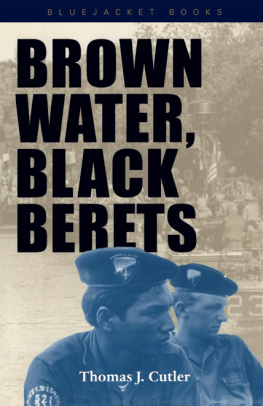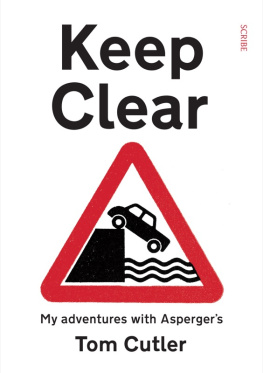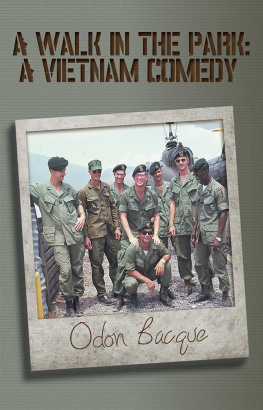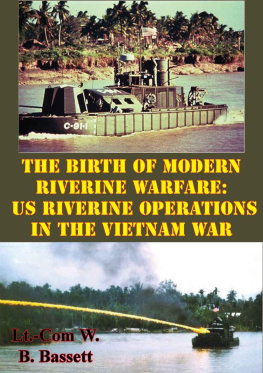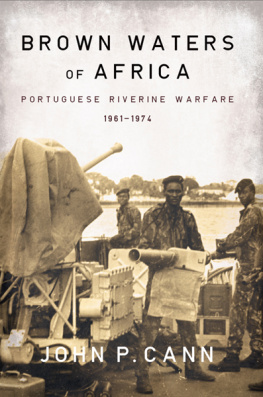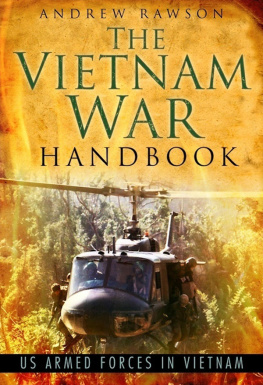BROWN WATER, BLACK BERETS

Coastal and Riverine Warfare in Vietnam
Thomas J. Cutler

BLUEJACKET BOOKS
NAVAL INSTITUTE PRESS
Annapolis, Maryland
This book has been brought to publication by the generous assistance of Marguerite and Gerry Lenfest
Naval Institute Press
291 Wood Road
Annapolis, MD 21402
1988 by the U.S. Naval Institute, Annapolis, Maryland
All rights reserved. No part of this book may be reproduced or utilized in any form or by any means, electronic or mechanical, including photocopying and recording, or by any information storage and retrieval system, without permission in writing from the publisher.
First Bluejacket Books printing, 2000
ISBN 978-1-55750-196-7
The Library of Congress has cataloged the hardcover edition as follows:
Cutler, Thomas J., 1947
Brown water, black berets : coastal and riverine warfare in Vietnam / Thomas J. Cutler.
p. cm.
Bibliography: p.
Includes index.
ISBN 978-0-87021-011-2
1. Vietnamese Conflict, 1961-1975Riverine operations, American.
2. Vietnamese Conflict, 1961-1975Naval operations, American.
I. Title
DS558.7.C87 1988
87-35482 959.704345dcl9
to Broad
typist, editor, critic, and loving wife
CONTENTS
When I was in Vietnam, a bunch of us decided to
Wait a minute. I must have misunderstood. I thought you were in the Navy.
I am.
Well, what were you doing in Vietnam?
I have participated in conversations like this one many times since returning from Vietnam, and other Navy veterans have told me of similar experiences. Not many people realize that the U.S. Navy and Coast Guard served in-country Vietnam (as opposed to serving on ships off the coast) in coastal and riverine warfare during Americas involvement there. Few books about the Vietnam War even mention this aspect; those that do give scant coverage at best.
In proportion to the other services, the in-country participation of the U.S. Navy and Coast Guard was very small: a peak strength of 38,000 Navy men compared with more than half a million total American servicemen in Vietnam at the height of the war. But those 38,000 grow to 1,842,000 when stretched over the years of the war, and those Navy and Coast Guard men who served do not deserve to be forgotten. My own experiences in Vietnam were not heroic nor particularly noteworthy, but there were thousands whose experiences are worth telling for the benefit of future generations.
I have endeavored to record the facts and figures that tell this unusual story, but more important, I have tried wherever possible to convey what it was like for the individuals who participated: what they saw, what they thought, what they felt, and, of course, what they did. To that end I interviewed veterans of the so-called brown-water experience and wrote chapters around those interviews. In every case, to ensure authenticity, I sent my chapter manuscripts for review by those individuals whose experiences were included. Therefore, I believe what is recorded accurately reflects the events and circumstances as those individuals saw them.
The examples rendered herein should in no way be construed as all-inclusive. Space limitations permit only the tiniest sample of the thousands of patrols, firefights, and personal experiences that go together to make up this complex story of men at war. Some readers will undoubtedly know of another individual who should have been singled out as I have done in the following pages or of an incident that would better have typified the story. But it would be impossible to record every individuals experiences or all the noteworthy incidents. I was forced to choose among many, and did so based upon their importance, as either typical or, in some cases, exceptional examples, and upon the availability of supporting documents and the individuals themselves.
The thrust of this work is primarily (and unashamedly) positive. Much has been written about the negative side of the Vietnam War, questioning the legality and morality of the U.S. intervention, or criticizing the strategy and tactics employed; it is not my intention to add to that. Conversely, I do not ignore certain negative aspects of the war where they are relevant to the account attempted here. In the course of my research I discovered (with no surprise) examples of men who lost their nerve in moments of crisis and even some who chose not to go on a particular patrol because of its high risk factor. I chose not to dwell on these few cases because I believe that if we are honest with ourselves, we can all empathize with such actions. The man who believes that he would never break under fire... has never been under fire.
The names given here are, in nearly every case, the real names of the individuals involved. In a few instances I have changed the names where the stories were controversial and I was unable to locate the individuals. I also changed the names of some of the Vietnamese to prevent reprisals against them by the Communist government now in power.
A total of 2,663 Navy and 7 Coast Guard men died in the war. Not all of them died on the rivers or coasts of Vietnam, but a large percentage did. For them, especially, this book had to be written.
I must first acknowledge the contributions of my wife, Debby, to the writing of this book. The spouse of any writer endures certain peculiarities and hardships not associated with other habits; but in this case my wife not only endured, she contributed countless hours of work on a subject she had heretofore considered anathema. Her efforts and support were truly above and beyond the call of duty.
In the interest of brevity I will not single out those whose names appear in the text. Their contributions should be evident. Each and every one was marvelously cooperative; I consider it an honor to have worked with people who contributed so much to their country. Many went far beyond professional assistance and have become my friends as well.
I owe a special debt to Louise Meyerkord for her willingness to share with me memories of her son. She and her former daughter-in-law, Jane Bonfanti, helped me to better understand the character of Dale Meyerkord, which would have been impossible without their willing cooperation. I acknowledge their assistance and admire their courage.
I am also indebted to Mr. Wilbur E. Garrett, editor of the National Geographic, who took time out of his busy schedule to review the portion of the book dealing with Dickey Chapelle.
In no particular order, I am indebted to the following people who are not mentioned in the text but who provided background information that helped me considerably: Jay Potter for helping me to understand the role of PGs; Martha Tilyard, Fred Joest, and Sea McGowen for providing much of the background on the development of the PBR; John Williams, Curt Lasley, Rod Thompson, Chuck White, John Mellin, Dave Capozzi, Gary Raymond, Joseph Heckendorn, Bill Moreo, Paul Bohn, James Walker, Bill Hedrick, and the other Gamewardens of Vietnam who talked with me about their PBR experiences; Tom Cruser and John Miller for giving me some insight into Sea Float; and Charles Gentile, who helped me better understand the Army
At the various depositories of research material, I am particularly indebted to Ed Marolda of the Naval Historical Center in Washington, D.C.; Donna Hurley and Gloria Perdue of Nimitz Library at the U.S. Naval Academy in Annapolis, Maryland; Dennis Vetock of the United States Army Military History Institute at Carlisle Barracks in Pennsylvania; Harry Schreckengost of the Defense Technical Information Center in Alexandria, Virginia; Wilfred R. Morris, public affairs officer for the USS

